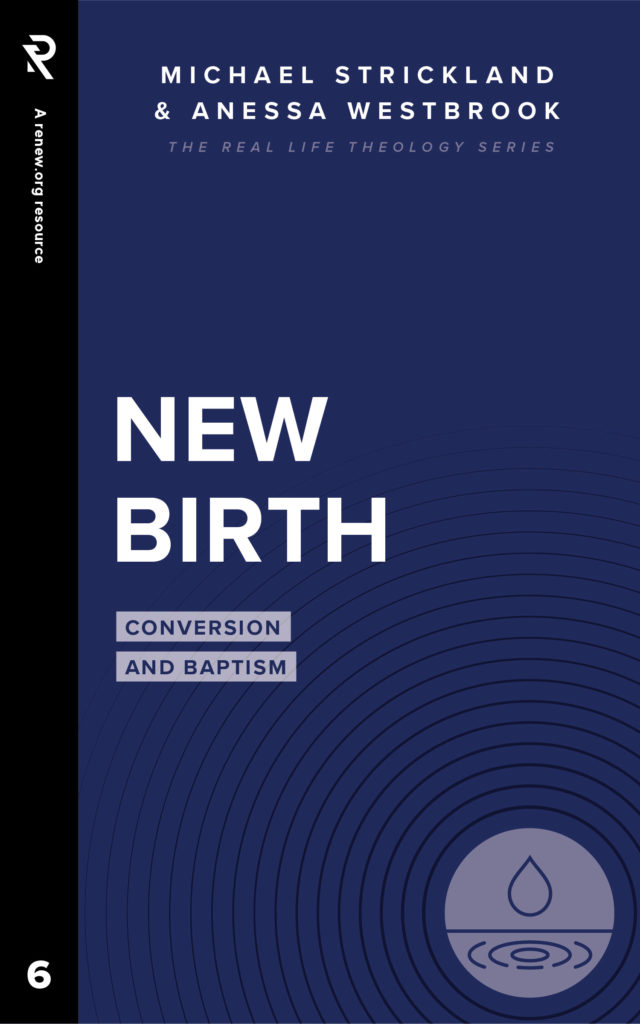
What Is Repentance and What Does It Look Like?
*Editor’s Note: The following is an excerpt from New Birth: Conversion and Baptism.
In the first-century Jewish world, large numbers of people were drawn to the simple message of repentance. Both John the Baptist and Jesus preached, “Repent, for the kingdom of heaven has come near” (Matthew 3:2; 4:17). Mark 1:4 tells us that John “preached a baptism of repentance for the forgiveness of sins.”
All three of these—baptism, repentance, and forgiveness—assume humans share the same predicament: we are sinful (Romans 3:10). In fact, in order to receive forgiveness of sins, we need to confess our sins (1 John 1:9). However, confessing one’s personal sins—as distinguished from confessing Jesus as Lord—isn’t the end of the journey of following Jesus.
King Jesus calls us to a life of discipleship. Being a disciple means surrendering our own will and submitting to his.
What Is Repentance?
In biblical times, followers of Jesus were called to turn from their own sins and reject the worldliness of the predominant culture (Romans 12:2). Today we are also called to turn from our sin toward God. This change is referred to as repentance.”
Repentance is a change of mind and a change in action.
The Greek noun used in the New Testament that we translate as “repentance” is metanoia. Both metanoia and its verb form, metanoeō, had been used by Greek philosophers for centuries to describe a change of mind, but by Jesus’ day, the Jews also used it to refer to a change of behavior.[1]
So when Peter told a crowd of onlookers to “repent and be baptized” (Acts 2:38), he was calling them to change their lives—a process that begins at baptism, yes, but continues for a lifetime (2 Corinthians 7:1). John Mark Hicks and Greg Taylor rightly describe the relationship between repentance and baptism like this:
Baptism signals transformation, but God’s work in us is far from complete. Though discipleship begins before baptism, the event of immersion marks a new identity, ethic, and world view that defines discipleship. . . . Baptism marks a lifetime process of dying to sin and renewing our appeal to God for a new life.[2]
What Does Repentance Look Like?
An example of biblical repentance is found in Acts 19. The Holy Spirit had been working miracles through Paul, and after one particularly remarkable display of God’s power (Acts 19:13–16), Luke describes the response of the people of Ephesus:
When this became known to the Jews and Greeks living in Ephesus, they were all seized with fear, and the name of the Lord Jesus was held in high honor. Many of those who believed now came and openly confessed what they had done. A number who had practiced sorcery brought their scrolls together and burned them publicly. When they calculated the value of the scrolls, the total came to fifty thousand drachmas. In this way the word of the Lord spread widely and grew in power. (Acts 19:17–20)
Here we see that repentance followed belief in the Lord Jesus, and it involved an admission of sin and a dramatic turning away from that sin—a single act that cost the equivalent of fifty thousand days’ wages! But those new disciples were not merely destroying their sinful instruments; they were signifying that they were turning away from their former lifestyles, never to return again.
Yet not all repentance is demonstrated in grandiose deeds of sacrifice.
When people asked John the Baptist what repentance would look like for them, he gave practical advice:
And the crowds asked him, “What then shall we do?” And he answered them, “Whoever has two tunics is to share with him who has none, and whoever has food is to do likewise.” Tax collectors also came to be baptized and said to him, “Teacher, what shall we do?” And he said to them, “Collect no more than you are authorized to do.” Soldiers also asked him, “And we, what shall we do?” And he said to them, “Do not extort money from anyone by threats or by false accusation, and be content with your wages.” (Luke 3:10–14, ESV)
These aren’t grandiose demonstrations of religious devotion—sharing your food and clothing; not abusing your position—but they are the very kinds of “mundane” acts that reflect a changed life.
Repentance is a change of mind and a change in action.
[1] Theological Dictionary of the New Testament, ed. Gerhard Kittel and Gerhard Friedrich, trans. Geoffry W. Bromiley (Grand Rapids: Eerdmans, 1964–1976), 4:975–1003. The Jewish historian Josephus and the Jewish philosopher Philo of Alexandria both used metanoia in a sense of a change heart and behavior, as opposed to the pagan Greek idea that “never suggests an alteration in the total moral attitude, a profound change in life’s direction, a conversion which affects the whole conduct.” See TDNT, 4:979.
[2] John Mark Hicks and Greg Taylor, Down in the River to Pray (Siloam Springs, AR: Leafwood Publishers, 2004), 168.
Excerpted from Michael Strickland and Anessa Westbrook, New Birth: Conversion and Baptism (Renew.org, 2021).










